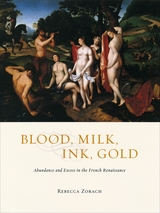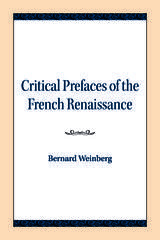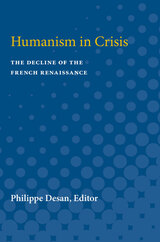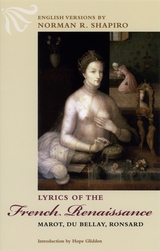4 books about French Renaissance

Blood, Milk, Ink, Gold
Abundance and Excess in the French Renaissance
Rebecca Zorach
University of Chicago Press, 2005
Most people would be hard pressed to name a famous artist from Renaissance France. Yet sixteenth-century French kings believed they were the heirs of imperial Rome and commissioned a magnificent array of visual arts to secure their hopes of political ascendancy with images of overflowing abundance. With a wide-ranging yet richly detailed interdisciplinary approach, Rebecca Zorach examines the visual culture of the French Renaissance, where depictions of sacrifice, luxury, fertility, violence, metamorphosis, and sexual excess are central. Zorach looks at the cultural, political, and individual roles that played out in these artistic themes and how, eventually, these aesthetics of exuberant abundance disintegrated amidst perceptions of decadent excess.
Throughout the book, abundance and excess flow in liquids-blood, milk, ink, and gold-that highlight the materiality of objects and the human body, and explore the value (and values) accorded to them. The arts of the lavish royal court at Fontainebleau and in urban centers are here explored in a vibrant tableau that illuminates our own contemporary relationship to excess and desire.
From marvelous works by Francois Clouet to oversexed ornamental prints to Benvenuto Cellini's golden saltcellar fashioned for Francis I, Blood, Milk, Ink, Gold covers an astounding range of subjects with precision and panache, producing the most lucid, well-rounded portrait of the cultural politics of the French Renaissance to date.
Throughout the book, abundance and excess flow in liquids-blood, milk, ink, and gold-that highlight the materiality of objects and the human body, and explore the value (and values) accorded to them. The arts of the lavish royal court at Fontainebleau and in urban centers are here explored in a vibrant tableau that illuminates our own contemporary relationship to excess and desire.
From marvelous works by Francois Clouet to oversexed ornamental prints to Benvenuto Cellini's golden saltcellar fashioned for Francis I, Blood, Milk, Ink, Gold covers an astounding range of subjects with precision and panache, producing the most lucid, well-rounded portrait of the cultural politics of the French Renaissance to date.
[more]

Critical Prefaces of the French Renaissance
Bernard Weinberg
Northwestern University Press, 1950
Critical Prefaces of the French Renaissance contains nearly 30 prefaces from the works of French poets and dramatists published from 1525 to 1611. Bernard Weinberg’s helpful book collects prefaces from the works of satirical poets, as well as dramatists, and provides a short introduction to each preface setting it in its literary and historical context. Lyrical and satirical poets represented vary from Marot to Du Bellay to Ronsard. Dramatists represented include Jean de la Tille and Larivey, among others. The larger introduction to the volume provides literary analysis of five longer texts by Sebillet, Du Bellay, Peletier du Mans, the obscure Pierre De-laudun, and Horace. Weinberg’s study brings attention back to these primary writings that are crucial for an understanding of the period.
[more]

Humanism in Crisis
The Decline of the French Renaissance
Philippe Desan, Editor
University of Michigan Press, 1991
The uniqueness and importance of Humanism in Crisis arises from the way in which a significant historical event—the end of the French Renaissance—is examined from several different perspectives in order to provide a thorough investigation of its causes and consequences. Although historians, philosophers, sociologists, and literary critics view the French Renaissance differently, they all seem to agree on the notion that something happened between 1580 and 1630—between Montaigne and Descartes—that transformed every aspect of society and that undermined the foundation of humanism in France, dividing the French Renaissance from the "Grand siècle" that followed it. The causes of this decline, however, are as obscure as a precise determination of when the French Renaissance "died." In Humanism in Crisis, fourteen internationally known scholars examine such topics as education, philosophy, scientific method, historical relativism, cosmography, literary genres, everyday life, medicine, and mythology and detect a series of crises that acted to bring about the decline of humanism and the end of the French Renaissance. The diversity of approaches allows a comprehensive vision of society to be presented. Moreover, several essays provide answers to questions asked in others, thus creating a sense of unity by relating individual contributions to each other.
[more]

Lyrics of the French Renaissance
Marot, Du Bellay, Ronsard
Edited by Norman R. Shapiro
University of Chicago Press, 2006
Renowned translator Norman R. Shapiro here presents fresh English versions of poems by three of Western literature’s most gifted and prolific poets—the French Renaissance writers Clément Marot, Joachim Du Bellay, and Pierre de Ronsard. Writing in the rhymed and metered verse typical of the original French poems (which appear on facing pages), Shapiro skillfully adheres to their messages but avoids slavishly literal translations, instead offering creative and spirited equivalents.
Hope Glidden’s accessible introduction, along with the notes she and Shapiro provide on specific poems, will increase readers’ enjoyment and illuminate the historical and linguistic issues relating to this wealth of more than 150 lyric poems.
“A marvelous micro-anthology of sixteenth-century French letters. Representing the pinnacle of French Renaissance verse, the poems singled out here are sensitively interpreted in rhymed English versions. . . . There is a pleasant and inspiring craftsmanship in these interpretations.”—Virginia Quarterly Review
Hope Glidden’s accessible introduction, along with the notes she and Shapiro provide on specific poems, will increase readers’ enjoyment and illuminate the historical and linguistic issues relating to this wealth of more than 150 lyric poems.
“A marvelous micro-anthology of sixteenth-century French letters. Representing the pinnacle of French Renaissance verse, the poems singled out here are sensitively interpreted in rhymed English versions. . . . There is a pleasant and inspiring craftsmanship in these interpretations.”—Virginia Quarterly Review
[more]
READERS
Browse our collection.
PUBLISHERS
See BiblioVault's publisher services.
STUDENT SERVICES
Files for college accessibility offices.
UChicago Accessibility Resources
home | accessibility | search | about | contact us
BiblioVault ® 2001 - 2024
The University of Chicago Press









